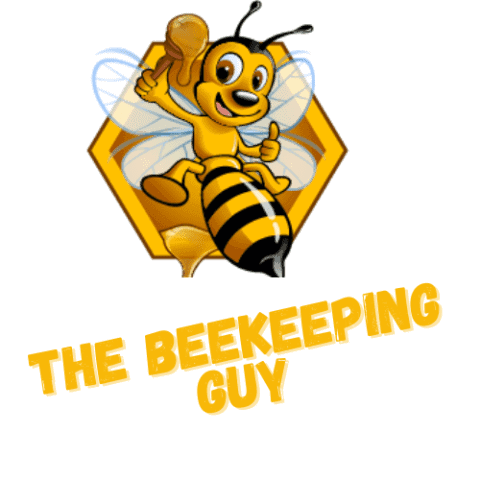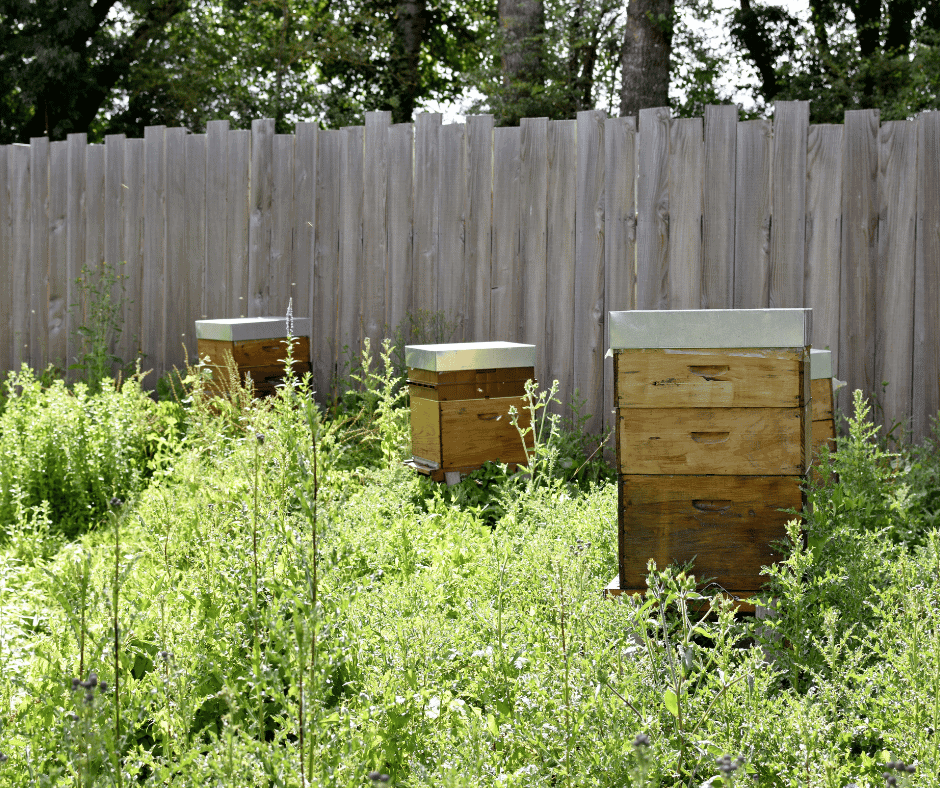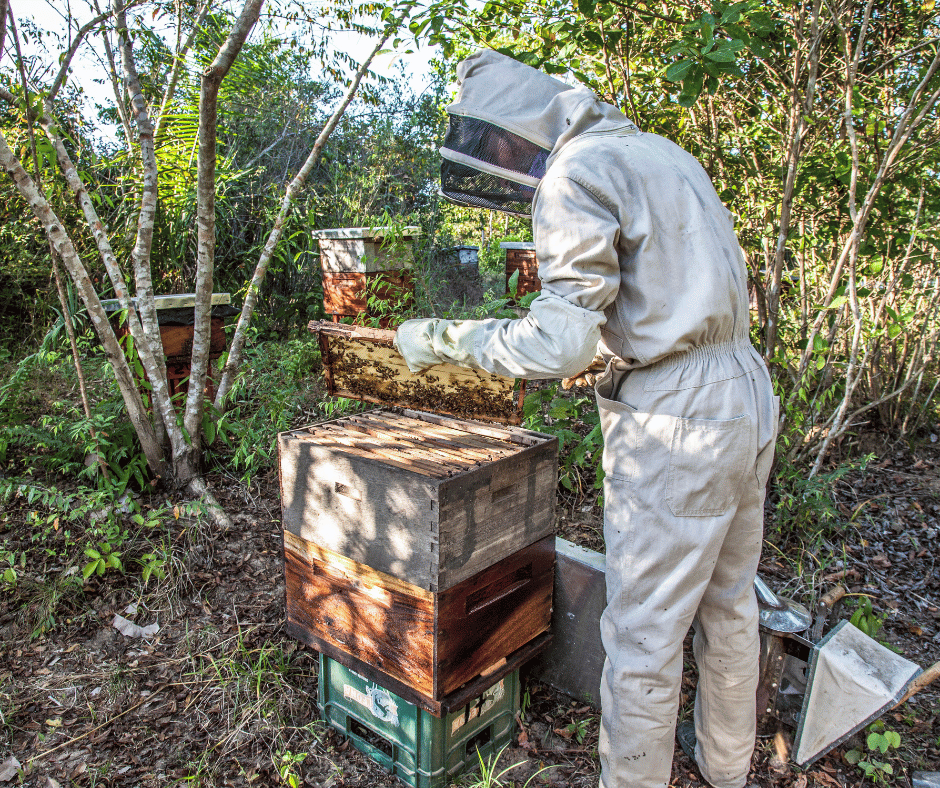
As a passionate beekeeper, I’ve always been fascinated by the complex world of honey bees and their remarkable ability to work together for the greater good of their colony. But let’s face it, our buzzing friends are facing some serious challenges in today’s world, which is why I decided to dive deeper into holistic beekeeping—a sustainable approach that fosters a healthy environment for our beloved pollinators while still allowing us to enjoy the sweet rewards of their labor.
In this article, we’ll explore the fascinating world of holistic beekeeping, where we consider honey bees as a unit working together with their queen and environment to ensure survival.
We’ll discuss how understanding and supporting natural behaviors like swarming can help combat threats like Varroa mite infestations and promote healthier colonies.
So join me on this journey toward sustainable beekeeping practices that not only benefit our precious honey bees but also serve our innate desire to make a positive impact on the world around us!
Table of Contents
An Overview Of Holistic Beekeeping
Imagine tending to your bee colonies with a deep understanding of their intricate needs, working harmoniously with nature’s cycles to ensure their health and productivity – that’s the essence of embracing a holistic approach to beekeeping.
Holistic strategies focus on maintaining beehive health by closely observing colony dynamics and using natural remedies when necessary. As a beekeeper, you’ll learn how to manage your apiary in tune with the bees’ natural behaviors and yearly cycles, making timely interventions for sustainable honey production.
A key aspect of holistic beekeeping is fostering strong communication between yourself and the bees. By attentively observing their behavior, you can gain valuable insights into their needs and struggles. This awareness allows you to provide support through simple yet effective methods such as providing clean water sources or adjusting hive placement for optimal sun exposure.
Additionally, being knowledgeable about potential stressors like Varroa mite infestations enables you to address these issues before they escalate, ultimately ensuring the health of your apiary.
As a holistic beekeeper, the well-being of both your bees and the environment become intertwined priorities. Striving for sustainability means considering not just honey production but also nurturing wild honeybee populations that have adapted to local conditions over generations.
By adopting eco-friendly practices in tandem with traditional beekeeping techniques, you contribute positively toward preserving these vital pollinators as well as delivering bountiful harvests year after year.
Now let’s take an insightful journey into understanding wild honey bees and how we can learn from them in our quest for successful holistic beekeeping endeavors, promoting an ecological balance, and fostering a sustainable environment for generations to come.
Wild Honey Bees

In the world of wild honey bees, they’ve mastered the art of survival and adaptation through their natural behaviors and innate resilience, offering valuable lessons for sustainable beekeeping practices. Wild survival in these bees is made possible by their exceptional bee communication, which allows them to coordinate tasks like foraging and defense effectively.
As they engage in natural foraging activities, honey bees contribute positively to colony health by providing nourishment that helps maintain a strong workforce capable of coping with various challenges.
Through their intricate dances and natural pheromones, wild honey bees convey vital information about food sources, directions, distances, as well as potential dangers to each other. By seeking out diverse sources of nectar and pollen from a variety of flowers within their environment, wild honey bees maintain a balanced diet that ultimately contributes to stronger immunity against diseases.
By observing how wild honey bees thrive amidst adversity through these three key aspects – bee communication, natural foraging, and environmental adaptation – we can gather insights into how holistic management techniques may be applied to promote sustainability among domesticated colonies. One essential takeaway is that allowing our managed hives enough autonomy in carrying out these instinctual behaviors could lead to better overall colony health.
As we look deeper into the behavior of domesticated beehives in the next section, let’s keep this understanding at the forefront: copying nature’s wisdom might just hold the keys to ensuring our beloved pollinators’ well-being long-term.
Domesticated Beehives
Now, let’s explore the world of domesticated beehives and see how you can apply lessons from wild honey bees to ensure a sustainable and flourishing home for the bees.
There are numerous benefits to having a domesticated hive, including easier access to honey, increased pollination in your gardens, and the opportunity to support local bee populations. However, it’s crucial that we adopt responsible colony management techniques in order for our apiaries to thrive.
This includes thoughtful hive location selection (considering factors such as sunlight exposure, wind protection, and availability of nearby food sources), regular hive maintenance practices (such as cleaning and inspection), and incorporating bee-friendly landscaping into your property design.
One way I do this is by learning from wild honey bees’ adaptive behaviors and applying those principles within my own apiary. For instance, understanding their swarming instincts helps me anticipate when they might need more space or resources; comprehending their yearly cycles allows me to plan interventions at opportune times; and appreciating their ability to cope with environmental stressors inspires me to prioritize holistic management approaches that enhance overall colony resilience.
By fostering these connections between the natural wisdom of wild honey bees and our own domesticated hives, we have an opportunity not just for personal success but also for collective ecological harmony.
We must remember that our efforts extend beyond simply cultivating honey or just enjoying our bees – we’re taking part in something larger than ourselves: serving as stewards of these vital pollinators who play such an essential role in maintaining ecosystem balance.
But there is one pressing challenge faced by both wild honey bees and domesticated colonies alike: varroa mite infestation – a key obstacle in sustaining healthy beehives across the globe.
Varroa Mite Infestation
You’ve likely heard of the pesky varroa mite, a tiny parasite that wreaks havoc on honey bee colonies like an invading army in the night, weakening their defenses and causing widespread devastation. As a holistic beekeeper, it’s essential to understand how this invader threatens our bees’ survival and take appropriate action to protect them.
Varroa management should be an integral part of your overall approach to sustainable beekeeping, which includes ensuring mite resistance through breeding practices, infestation prevention with regular hive inspections, and employing natural treatments when necessary.
- Mite resistance: One key aspect of holistic beekeeping is promoting mite-resistant honey bees by selecting traits that help them cope with the stressors in their environment. By allowing weaker colonies to perish naturally or requeening with more resistant stock, you’ll contribute to the overall genetic improvement of your apiary.
- Infestation prevention: Regular hive inspections are crucial for identifying potential varroa outbreaks before they become unmanageable. By monitoring mite levels closely throughout the year and intervening as needed with non-chemical methods such as drone brood removal or sugar dusting, you can keep infestations under control.
- Natural treatments: While chemical miticides may seem like a quick fix for varroa problems, they often disrupt the delicate balance within the colony and harm beneficial insects as well. Instead, consider using natural treatments such as oxalic acid vaporization or thymol-based products that have been proven effective against varroa without harming your bees.
As you continue on your journey towards mastering holistic beekeeping practices, remember that understanding and working in harmony with yearly bee cycles is just as important as managing pests like varroa mites. By becoming aware of these natural rhythms and responding appropriately at each stage of development – from spring buildup through winter dormancy – you’ll be better equipped to support thriving, resilient colonies that are capable of fending off threats and providing you with abundant honey harvests.
The Yearly Bee Cycles
So, let’s dive into the fascinating world of yearly bee cycles and discover how understanding them can help you become a more sustainable and successful beekeeper.
Seasonal management is crucial to maintaining colony health, as it involves adjusting your approach based on the time of year and the specific needs of your bees. A big part of this is being aware of nectar flow periods when certain bee-friendly plants are in bloom, providing abundant food for your buzzing friends.
By timing your interventions appropriately, you’ll be supporting their natural routines and ensuring they have what they need to thrive. Another essential aspect of seasonal management is preparing your hive for winter.
Although honey bees are incredibly resilient creatures, harsh weather conditions can pose significant challenges to their survival if they’re not adequately prepared. So as a responsible beekeeper, it falls on you to make sure that their hives are well-insulated, properly ventilated, and stocked with enough food reserves to last through the cold months when nectar sources become scarce.
By doing so, you’ll ensure that come springtime, your colony will be healthy and ready for another busy season. Understanding these yearly cycles not only benefits your bees but also helps you serve others by contributing positively to local ecosystems through pollination services provided by healthy colonies.
Swarming and Reproduction

Swarm prevention is essential in maintaining colony health and ensuring your bees’ reproductive instincts aren’t hindered. As a beekeeper, understanding swarm control measures helps you manage your honeybee colonies holistically by working with their natural tendencies instead of against them. By mastering these techniques, you’ll be better equipped to foster a thriving colony while also supporting the honeybees’ need for queen replacement.
Swarming is an incredible sight to witness as thousands of worker bees gather around their new queen bee and venture out in search of a new home.
Swarming allows for genetic diversity within the bee population, which strengthens resistance to disease and environmental stressors. So remember, embracing swarming as part of your holistic approach will not only ensure your colony’s health but also contribute positively to the wider ecosystem.
Now that we’ve covered the importance of swarming and reproduction in sustainable beekeeping, let’s look at another equally crucial aspect: treatment-free beekeeping.
This practice focuses on building strong colonies without relying on chemical interventions or treatments that can ultimately harm both bees and humans alike.
Treatment-Free Beekeeping
Imagine being an unstoppable, all-natural beekeeping superhero, saving your bees from harm while keeping your environment pristine and thriving – that’s the essence of treatment-free beekeeping!
By focusing on natural immunity and avoiding chemical alternatives, you can foster healthier colonies that are more resilient to disease and pests.
Planting bee-friendly plants in your garden or surrounding area not only provides a rich food source for your bees but also helps create a sustainable ecosystem where they can thrive.
By committing to treatment-free beekeeping, you’re taking an active role in colony monitoring and implementing ethical practices that prioritize the health of both individual bees and the entire hive.
It’s about observing their behavior closely, identifying potential issues early on, and intervening as needed using non-invasive techniques.
As we embrace this holistic way of caring for our bees, we set ourselves up for success as stewards of these incredible creatures. Treatment-free beekeeping is just one aspect of ensuring sustainability within our apiaries; it’s about working towards balance in every aspect of our interactions with honeybees.
So let’s keep learning together as we explore what sustainable beekeeping truly means – one step at a time!
What is Sustainable Beekeeping?
In sustainable beekeeping, you’re working towards creating a balanced and thriving environment for your honeybees, ensuring their long-term health and productivity.
This involves taking a holistic approach that considers various aspects such as sustainable hive designs, localized beekeeping practices, pollinator-friendly landscaping, and the use of hive monitoring technologies.
By adopting these measures, not only do you contribute to the overall well-being of your bees but also help in fostering stronger communities through community-supported apiaries.
As a beekeeper, it’s essential to understand the importance of providing a conducive environment for your bees. Localized beekeeping means adapting to the specific needs of your region by choosing suitable species or strains of bees that are better adapted to local conditions.
Pollinator-friendly landscaping can make your apiary more attractive and beneficial to native pollinators by incorporating diverse plant species that offer nectar and pollen throughout the year.
Additionally, embracing innovative hive monitoring technologies can greatly enhance your ability to detect potential problems early on before they escalate into full-blown crises.
While practicing sustainable beekeeping methods may require some additional effort initially, it ultimately benefits both the bees and us as caretakers in the long run.
As we learn how best to steward our honeybees while respecting their natural instincts and cycles, we gain valuable insights into effective management strategies that ensure our colonies remain healthy and productive for years to come.
With this focus on sustainability in mind, let’s explore some common challenges faced by beekeepers today so that we can better prepare ourselves for success in this rewarding endeavor.
Beekeeping Challenges
Navigating the ever-changing landscape of beekeeping can feel like trying to solve a complex puzzle, with each piece representing a unique challenge that must be overcome in order to secure the future of our buzzing friends. These challenges range from beekeeper education and colony health to hive equipment and harvesting methods, all while emphasizing the importance of pollination for our environment.
As someone who cares deeply about the well-being of honey bees, I understand that facing these hurdles is crucial if we want to create a sustainable future for both ourselves and our tiny winged companions.
Mastering these topics enables us not only to tackle existing problems but also to prepare us for any new challenges that may arise in this ever-evolving field.
The beauty of embracing this journey lies in realizing just how interconnected everything is: from our own actions as environmentally conscious individuals to the larger systems at play within nature itself.
Through holistic beekeeping practices that prioritize colony health above all else, we’re contributing to the well-being of our planet and serving a greater purpose.
So, let’s keep learning, adapting, and growing in our pursuit of sustainable beekeeping – for ourselves, for our buzzing friends, and for generations to come.
- Beekeeper education: The first step towards overcoming obstacles in beekeeping is arming oneself with knowledge. This includes understanding the intricate workings of honey bee colonies, being aware of their yearly cycles, and learning how to manage them holistically.
- Colony health: Ensuring that colonies are healthy involves monitoring for diseases and pests (like the dreaded Varroa mite), as well as providing them with adequate nutrition throughout the year.
- Hive equipment: Choosing suitable equipment plays an essential role in keeping bees comfortable and protected within their hives; this means selecting materials that are durable, easy to clean, and designed specifically for their needs.
- Harvesting methods: Adopting responsible harvesting techniques helps preserve colony strength by not over-harvesting honey or other resources which could weaken them.
Video On Natural Beekeeping
Final Thoughts
In the end, holistic beekeeping is like dancing to the rhythm of nature’s tune. It’s about embracing the ebbs and flows of honey bee life cycles and supporting their innate desire to thrive.
As a holistic beekeeper, I’m not just a caretaker, but a partner in this wondrous journey.
Together with my buzzing companions, we create a harmonious symphony that nourishes both our colonies and the environment around us.



